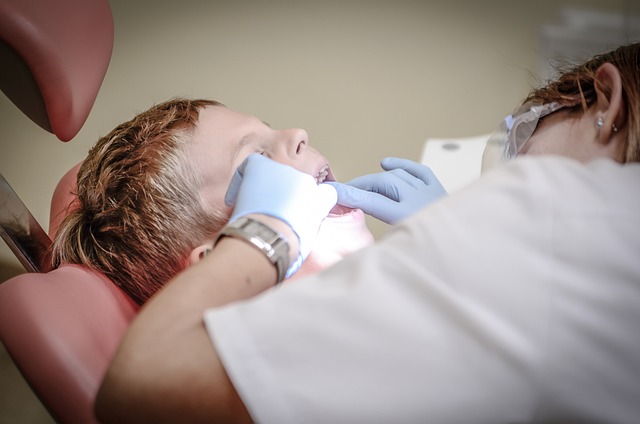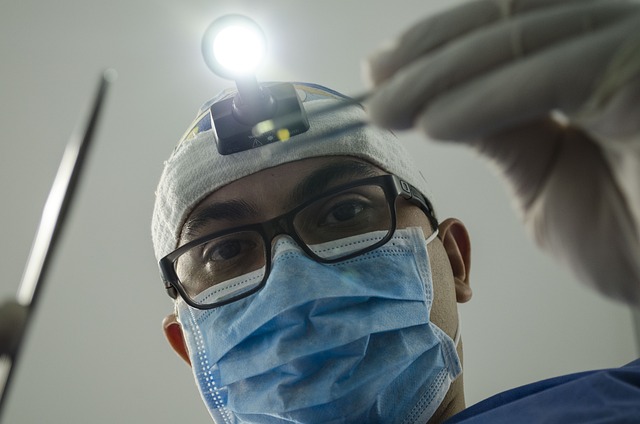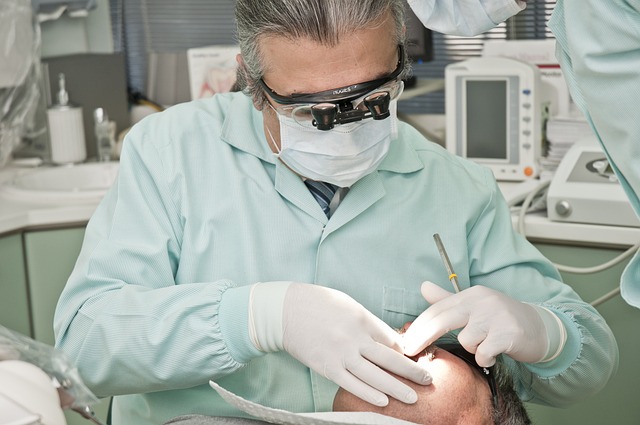What Does ‘Not Retained’ Mean in Dental Terminology?
Are you ever left scratching your head when your dentist mentions that a tooth is “not retained”? Don’t worry, you’re not alone. Dental terminology can be confusing, especially when it comes to understanding the implications of certain phrases. In this article, we will unravel the mystery behind the term “not retained” in dental jargon. By the end, you’ll have a clear understanding of what it means and why it matters for your oral health. So, sit back, relax, and let’s dive into the world of dental terminology together.
1. Understanding the Term: ‘Not Retained’ in Dental Terminology
In dental terminology, the term ‘not retained’ refers to the condition where a dental appliance, such as a denture or orthodontic appliance, is not securely held in place and tends to move or come loose. This lack of retention can cause discomfort, difficulty in chewing, and may even lead to the appliance falling out during normal activities. It is important to understand the reasons behind this issue and how it can be addressed to ensure optimal oral health.
There are several factors that can contribute to the lack of retention in dental appliances. These include:
- Poor fit: If the appliance is not properly fitted to the patient’s mouth, it can result in inadequate retention. This can occur due to improper measurements, changes in the oral structure over time, or inadequate adjustments made during the fitting process.
- Wear and tear: Over time, dental appliances can experience wear and tear, which can affect their retention. This can include damage to the appliance itself or changes in the underlying oral structures that impact its stability.
- Insufficient support: In some cases, the lack of retention may be due to a lack of support from the surrounding teeth or tissues. This can occur when there are missing teeth, bone loss, or other oral health issues that affect the stability of the appliance.
To address the issue of ‘not retained’ dental appliances, it is important to consult with a dental professional. They can assess the specific situation and recommend appropriate solutions. These may include adjustments to the appliance, the use of adhesives or other retention aids, or in some cases, the need for a new appliance altogether. By addressing the issue promptly, individuals can regain comfort, functionality, and confidence in their dental appliances.

2. The Importance of Retention in Dental Treatments: Unveiling the Meaning of ‘Not Retained’
Retention is a crucial factor in dental treatments, as it directly affects the success and longevity of the procedure. When we talk about “not retained,” it means that the dental restoration or appliance is not securely held in place, leading to potential complications and a shorter lifespan. Understanding the importance of retention is essential for both dental professionals and patients to ensure optimal oral health.
There are several reasons why retention plays a significant role in dental treatments:
- Stability: Proper retention ensures that dental restorations, such as crowns or bridges, remain stable and securely attached to the natural teeth or dental implants. This stability allows for normal functioning of the teeth, ensuring proper chewing and speaking abilities.
- Prevention of Microbial Growth: When a dental appliance is not retained properly, gaps or spaces may form between the appliance and the natural teeth. These spaces can act as breeding grounds for bacteria, leading to the accumulation of plaque and tartar. Adequate retention helps prevent such microbial growth, reducing the risk of dental decay and gum disease.

3. Exploring the Implications of ‘Not Retained’ in Dental Procedures
When it comes to dental procedures, the term “not retained” holds significant implications for both the patient and the dentist. Understanding these implications is crucial for making informed decisions about treatment options and ensuring optimal oral health outcomes.
Firstly, ”not retained” refers to a situation where a dental restoration, such as a crown or bridge, fails to stay securely in place. This can occur due to various reasons, including improper fit, weak bonding, or mechanical failure. The implications of such a scenario are multifaceted:
- Aesthetics: A not retained restoration can compromise the appearance of a patient’s smile, affecting their self-confidence and overall satisfaction with the dental work.
- Functionality: When a restoration is not retained, it can lead to difficulties in chewing and speaking, hindering normal oral functions.
- Oral health: A not retained dental restoration can create spaces where bacteria can accumulate, increasing the risk of tooth decay, gum disease, and other oral health issues.
For dentists, the implications of “not retained” extend beyond the immediate patient concerns. It highlights the importance of meticulous treatment planning, precise execution, and ensuring the longevity of dental restorations. By utilizing advanced techniques, materials, and technologies, dentists can minimize the occurrence of not retained restorations, providing patients with durable and functional dental work.

4. Unpacking the Reasons Behind ‘Not Retained’ in Dental Terminology
In dental terminology, the term “not retained” refers to a specific condition where a dental appliance or prosthesis fails to remain securely in place. This can happen for various reasons, and understanding these underlying causes is crucial for dental professionals to provide effective treatment. Here, we delve into the factors contributing to the “not retained” status in dental procedures, shedding light on the complexity of the issue.
One of the primary reasons for a dental appliance not being retained is inadequate fit. When a device, such as a denture or bridge, does not fit properly, it can easily become loose or dislodged. This poor fit can result from factors like incorrect measurements, poor denture base design, or insufficient adjustments during the fitting process. Moreover, natural changes in the oral cavity, such as bone resorption or gum recession, may also contribute to an ill-fitting appliance.
Another common cause of “not retained” in dental terminology is insufficient support. A dental appliance relies on the surrounding oral structures for stability. If the teeth, gums, or underlying bone lack the necessary support, the prosthesis may fail to stay in place. This can occur due to various reasons, including tooth loss, periodontal disease, or trauma. Additionally, poor oral hygiene practices and the presence of oral infections can further compromise the support system, leading to decreased retention of dental appliances.
By examining the reasons behind the “not retained” status in dental terminology, dental professionals can identify the specific issues and recommend appropriate treatment options. Whether it involves improving the fit of a device or addressing underlying oral health concerns, understanding the causes allows for tailored solutions to enhance patient comfort and overall dental well-being.

5. Dental Retention: An Essential Element for Long-lasting Oral Health
Dental retention plays a crucial role in maintaining long-lasting oral health. It involves various techniques and appliances that help keep teeth in their proper position after orthodontic treatment. Here are some key points to understand the importance of dental retention:
1. Stability: Dental retention ensures that teeth remain in their corrected positions, preventing any relapse or shifting. This stability is essential for maintaining a beautiful and functional smile.
2. Prevents Crowding: Retainers, which are commonly used for dental retention, help prevent teeth from crowding or becoming misaligned again. They provide support and prevent any unwanted movement.
3. Enhances Bite: Proper dental retention aids in maintaining a proper bite alignment. This not only improves the overall oral health but also prevents issues like TMJ disorders, teeth grinding, and headaches.
4. Supports Bone and Gum Health: Retention techniques contribute to the overall health of the supporting structures of the teeth, including the jawbone and gums. By keeping teeth in their correct positions, these structures remain stable, reducing the risk of periodontal diseases and bone loss.
5. Long-term Investment: Dental retention is a long-term investment in oral health. It ensures that the results achieved through orthodontic treatment are maintained, saving you from potential future dental procedures or additional orthodontic treatments.
By understanding the importance of dental retention, you can prioritize its role in your oral health journey. Regular visits to your orthodontist and following their recommendations for wearing retainers will help you achieve a lasting and healthy smile.
6. Identifying the Consequences of ‘Not Retained’ in Dental Contexts
In dental contexts, not retaining certain conditions or procedures can have significant consequences for both the patient and the overall oral health. These consequences can range from immediate discomfort to long-term complications. Here are some key consequences to consider:
- Increased risk of tooth decay: Failing to retain regular dental check-ups and cleanings can lead to a buildup of plaque and tartar, increasing the risk of tooth decay. Without professional cleaning, these harmful substances can erode enamel, causing cavities and potential tooth loss.
- Progression of gum disease: Neglecting to retain periodontal treatments can allow gum disease to progress, leading to inflammation, bleeding gums, and eventually, tooth loss. Regular maintenance appointments are essential for managing gum disease and preventing its advancement.
- Undetected oral issues: Skipping routine dental examinations may prevent the early detection of oral problems such as oral cancer, temporomandibular joint disorders, or other abnormalities. Early identification is crucial for successful treatment and improved outcomes.
By not retaining necessary dental procedures and regular appointments, patients may experience pain, compromised oral health, and potential financial burdens associated with more extensive treatments. It is essential to prioritize regular dental care to prevent these consequences and maintain optimal oral health.
7. Strategies to Improve Retention and Minimize the Occurrence of ‘Not Retained
Retention of customers is a crucial aspect of any business, and it requires thoughtful strategies to ensure that customers stay engaged and continue to avail of your products or services. Here are some effective strategies to improve retention rates and minimize the occurrence of customers not being retained:
1. Personalize the Customer Experience: Tailoring your communication and offerings to meet the unique needs and preferences of each customer is key to building strong relationships. Use customer data and analytics to understand their preferences, purchase history, and behavior. This will enable you to offer personalized recommendations, promotions, and rewards, making customers feel valued and understood.
2. Provide Exceptional Customer Support: Prompt and efficient customer support is essential for customer satisfaction and retention. Ensure that your support team is well-trained, knowledgeable, and readily available to address any concerns or issues that customers may encounter. Utilize various channels such as phone, email, and live chat to offer multiple options for customers to reach out for assistance. Additionally, actively seek feedback from customers to continuously improve your support services.
Frequently Asked Questions
Q: What Does ‘Not Retained’ Mean in Dental Terminology?
A: In dental terminology, ‘not retained’ refers to a situation where a tooth or a dental appliance fails to stay in its intended position or is unable to remain fixed within the oral cavity.
Q: What are some common examples of ’not retained’ conditions in dentistry?
A: Some common examples of ‘not retained’ conditions in dentistry include loose teeth, dental implants that fail to integrate with the jawbone, or removable dental appliances that do not adequately stay in place, such as dentures or orthodontic devices.
Q: What causes a tooth to become ‘not retained’?
A: Various factors can contribute to a tooth becoming ‘not retained.’ These may include gum disease, poor oral hygiene, trauma, bone loss, inadequate dental treatment, or insufficient support from neighboring teeth or dental structures.
Q: Can a tooth that is ‘not retained’ be saved or fixed?
A: The potential for saving or fixing a tooth that is ‘not retained’ depends on the underlying cause and the overall dental health of the patient. In some cases, appropriate dental treatment, such as periodontal therapy or restorative procedures, can help restore the tooth’s stability. However, in severe cases, extraction and replacement with a dental prosthesis may be necessary.
Q: How are dental appliances affected by being ‘not retained’?
A: Dental appliances, such as dentures or orthodontic devices, rely on proper retention for their functionality. When an appliance becomes ‘not retained,’ it can lead to discomfort, impaired speech or chewing ability, and compromised esthetics. In such cases, adjustments or repairs may be required, or alternative treatment options may need to be explored.
Q: What preventive measures can be taken to avoid the ‘not retained’ condition?
A: Maintaining good oral hygiene practices, including regular brushing and flossing, is essential in preventing the ’not retained’ condition. Routine dental check-ups and professional cleanings can also help detect and address any potential issues promptly. Additionally, following recommended dental treatment plans and using appropriate dental appliances correctly can significantly reduce the risk of ‘not retained’ situations.
Q: Is the term ‘not retained’ exclusive to dental terminology?
A: While the term ‘not retained’ is commonly used in dental terminology, it can also be found in other medical fields. However, its specific meaning may vary depending on the context. In dentistry, ‘not retained’ specifically refers to the inability of a tooth or dental appliance to remain fixed within the oral cavity.
Future Outlook
In conclusion, understanding the term “not retained” in dental terminology is crucial for both patients and dental professionals. By grasping this concept, patients can have a clearer understanding of the dental procedures they may undergo, while dental professionals can effectively communicate the treatment plan and potential outcomes. Here are the key takeaways from this article:
1. “Not retained” refers to teeth or dental appliances that have been removed or are no longer present in the mouth.
2. This term is commonly used when discussing the replacement or restoration of missing teeth.
3. Dental professionals may use various methods to replace missing teeth, such as dental implants, bridges, or dentures, depending on the individual’s needs.
4. Understanding the reasons behind tooth loss and the available treatment options can help patients make informed decisions about their oral health.
5. Regular dental check-ups and proper oral hygiene practices are essential for maintaining healthy teeth and preventing tooth loss.
6. If you have concerns about missing teeth or dental appliances, it is advisable to consult with a dental professional who can provide personalized guidance and treatment recommendations.
By staying informed about dental terminology, you can play an active role in your oral health journey and ensure you receive the best possible care. Remember, a healthy smile is a lifelong investment!






